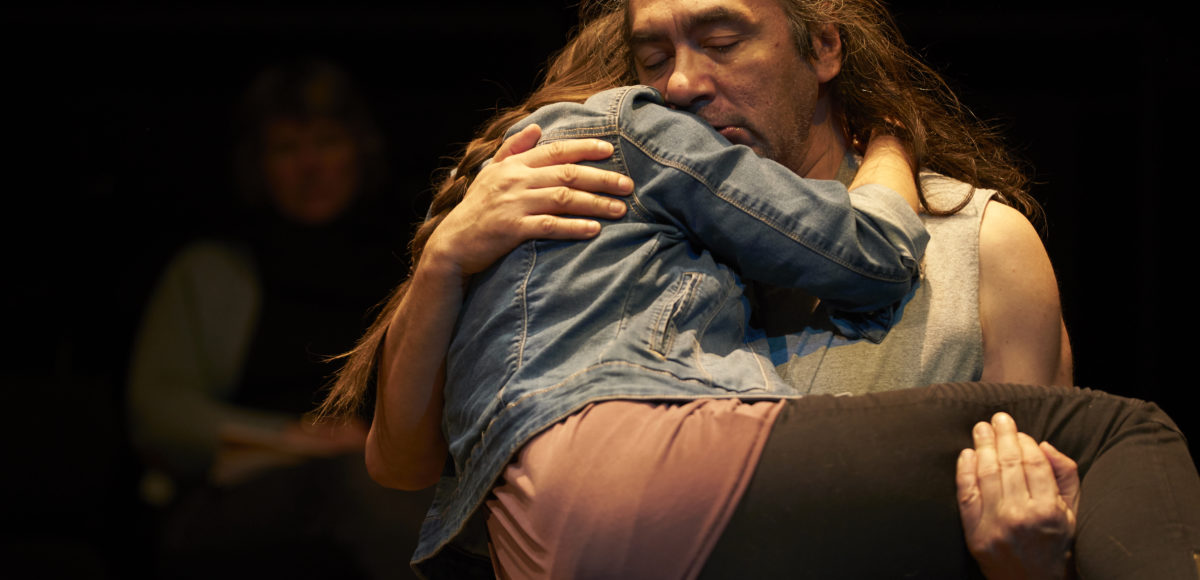Groundbreaking festival of Indigenous theatre at the National Arts Centre in Ottawa. Where the Blood Mixes

Sometimes it’s only by seeing a new production of a show that you realize what was lacking in an earlier version. That’s the case with Where the Blood Mixes by actor/playwright/director Kevin Loring, now artistic director of NAC Indigenous Theatre.
A searing, often funny and ultimately semi-hopeful exploration of the intergenerational legacy of residential schools, the play was performed at the National Arts Centre in 2010, a year after winning the Governor-General’s Literary Award for Drama. Directed by Glynis Leyshon, the Vancouver Playhouse Theatre/Belfry Theatre production was vivid, with an on-stage musician and an evocative design that included projections.
Then along came director/translator Charles Bender, who re–imagined the play in both official languages, stripping it to its essentials and presenting it in the round. Bender’s version, performed in both English and French, was part of Mòshkamo: Indigenous Arts Rising, the two-week festival that rang in the inaugural season of NAC Indigenous Theatre in September.
Bender’s production, practically devoid of set or props, is immediate and raw in ways the earlier production wasn’t. The intermingled story of the two central characters, Floyd (Marco Collin) and Mooch (Charles Bender) — their denial of the damage inflicted by residential schools, their inability to connect with those most important to them, their eviscerating loneliness — leaps unmediated from stage to audience and back to the stage in a kind of dramatic loop that underscores the multiple circles of the play itself, including the hoops of pain, hopelessness and potential healing that help define Floyd and Mooch and the sharing circle that ended each performance.
Concept and execution, in other words, united in ways that, in hindsight, the earlier production never achieved. Watching the show in the NAC’s Azrieli Studio rather than the larger Babs Asper Theatre where it played in 2010, you could also imagine this kind of unfussy, intimate production being replicated in community centres and other small spaces for a big effect.
Along with Collin and Bender, the cast included Soleil Launière as Floyd’s long-estranged daughter Christine, a powerhouse Émilie Monnet as Mooch’s much-put-upon girlfriend June, and Xavier Huard as the bartender George.
The production was not flawless. The play had run in French as a co-presentation with Zones Théâtrales before switching to English, and when we attended the English production on opening night, Collin tripped over his lines more than once. You could almost hear him trying to jump from French to English before he spoke, breaking character in the process.
There’s also a small bar in the set. Located just outside the circular acting space but used in the performance, it seemed to be both part of the story and not part of it. Again, suspension of disbelief suffered. But these were small prices to pay for an otherwise-revelatory production.
.————————-
The Festival continues through the 2020 season with Kiinalik from the NOrth coast in a coproduction by Buddies in Bad Times and The Great Canadian Theatre Company (Jan. 22-February 9, 2020). The Inner Elder with Michelle Thrush , a gemini award winning actor and story teller, and an exciting cabaret style performance Hot Brown Honey from the Briefs Factory (Australia) May5-9, at the NAC.